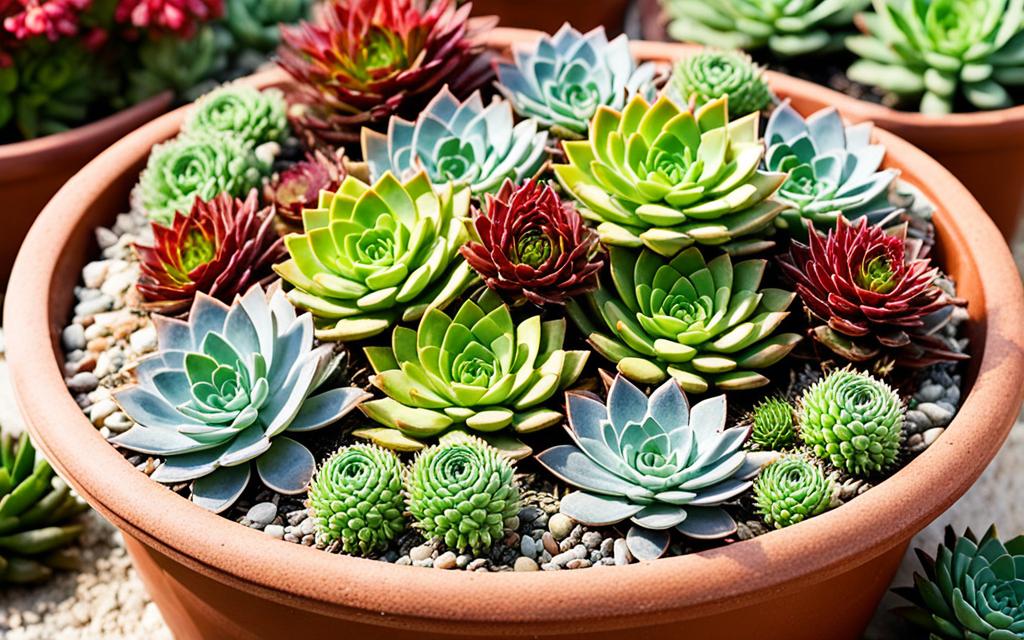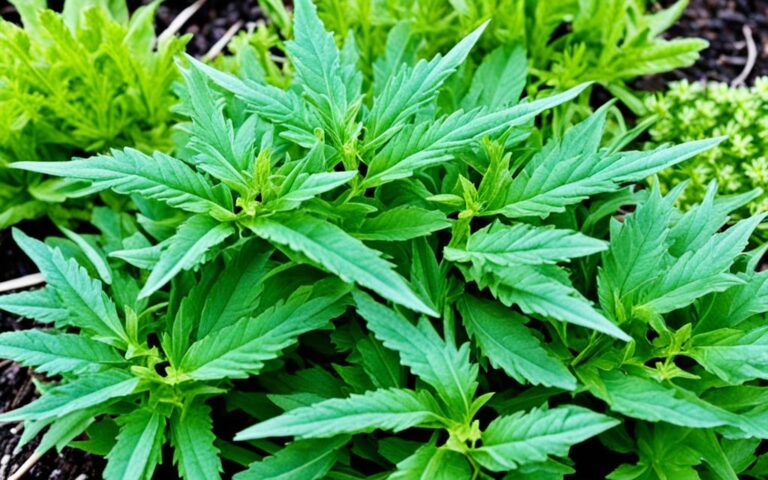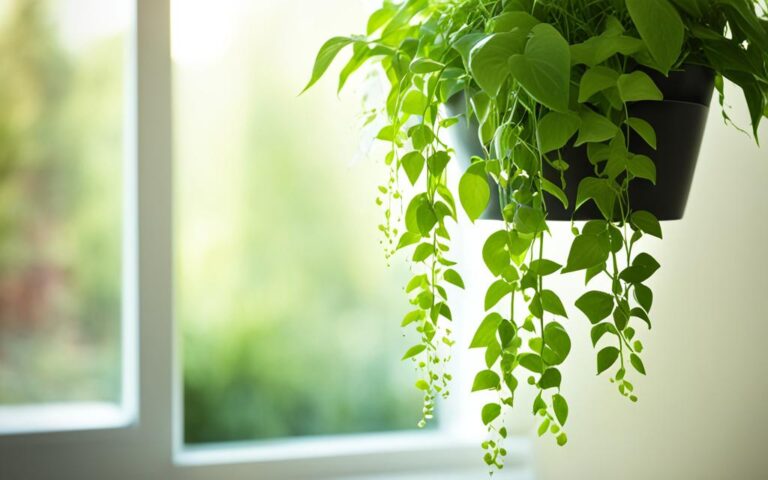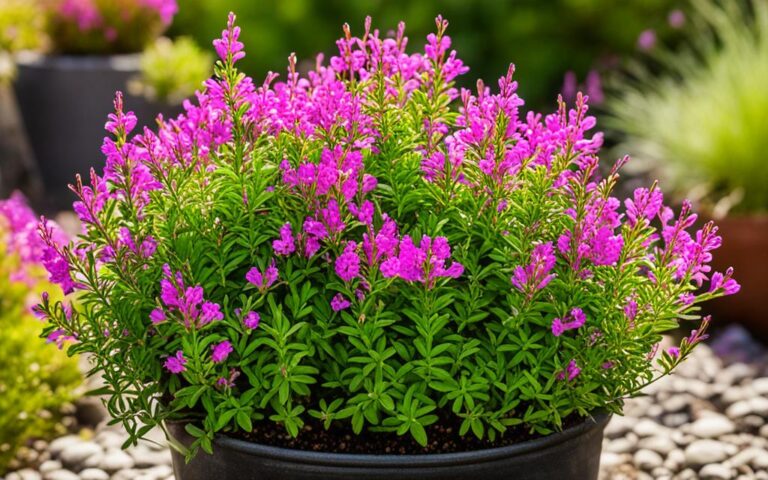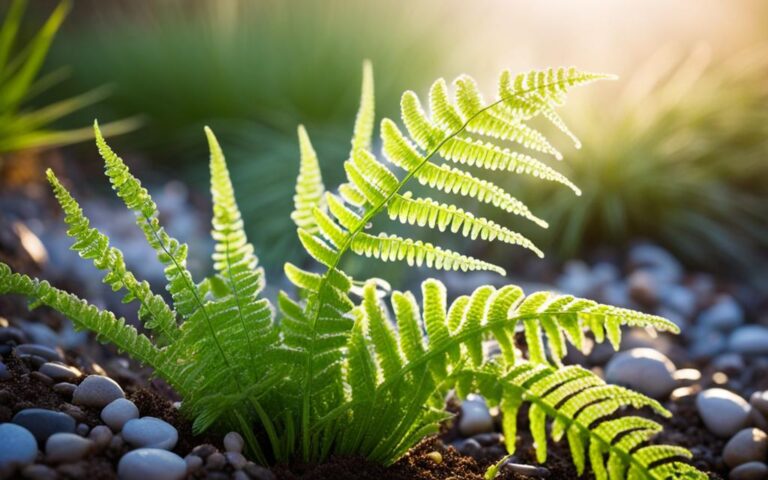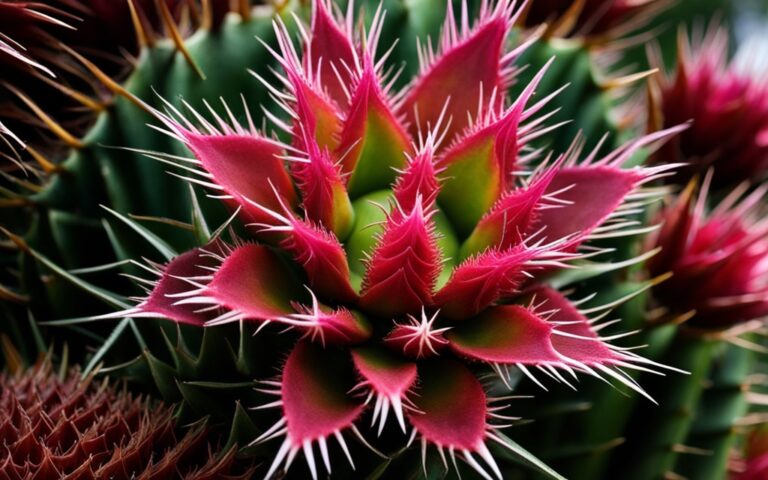Hens and Chicks Plant: Care Guide for Succulents
Picture a garden full of over 40,000 hens and chicks plants, each one a beautiful rosette of leaves. This shows how popular these easy-care, dry-resistant succulents are. Hens and chicks, or Sempervivum, are loved for their cute growth, flexibility, and ability to survive with little care.
These tough plants are great as ground covers, rock garden additions, and for containers. They’re perfect for gardeners who are always on the go or new to gardening. Their unique rosette shapes, with the big “hen” and little “chicks,” bring a fun touch to any garden. Whether inside or outside, hens and chicks will enchant you with their special traits and toughness.
Key Takeaways
- Hens and chicks are a popular, low-maintenance succulent plant known for their rosette growth habit.
- These hardy perennials are versatile, able to grow indoors and outdoors in a variety of climates.
- Hens and chicks are easy to propagate and make excellent ground covers, rock garden plants, and container specimens.
- Their drought tolerance and low-maintenance nature make them a great choice for busy gardeners and beginners.
- Hens and chicks can thrive in a wide range of hardiness zones, from 3 to 11 (USDA).
What is a Hens and Chicks Plant?
The hens and chicks plant, also known as Sempervivum or common houseleek, is a fascinating plant. It belongs to the Crassulaceae family. These alpine plants come from Europe and parts of Africa. They love dry conditions and grow low to the ground.
Botanical Name and Family
The scientific name for hens and chicks is Sempervivum, meaning “live forever” in Latin. This name shows how tough they are. They are part of the Crassulaceae family, known for their thick leaves that store water.
Common Names and Nicknames
People also call hens and chicks plants houseleek or liveforever. Their unique way of growing, with “hen” and “chick” rosettes, is why they’re named this way.
Unique Characteristics and Growth Habits
Hens and chicks plants stand out with their rosette growth habit. The big “hen” rosette has smaller “chick” rosettes around it, making a beautiful mat. Each rosette can grow 1 to 4 inches tall and spread 2 to 12 inches wide. They have fleshy, pointed leaves in colors like green, pink, blue, purple, and burgundy.
“Hens and chicks are truly remarkable alpine plants, thriving in poor soil and harsh conditions where many other species would struggle to survive.”
Varieties and Species of Hens and Chicks
The most common type of hens and chicks is sempervivum, known as Sempervivum tectorum. This species comes in many popular types, each with different leaf colors, sizes, and growth patterns. For example, ‘Sunset’ has green and burgundy leaves, while ‘Cebenese’ has pale green leaves that look like a cobweb. Sempervivum tectorum gives gardeners many choices.
Sempervivum Tectorum Varieties
- The ‘Gold Nugget’ Sempervivum variety has a maximum height of under 3 inches.
- The ‘Terracotta Baby’ Sempervivum variety grows to approximately 8 inches in height.
- The ‘Windstille’ Sempervivum species rosette size is 2 inches.
- The ‘Raspberry Ice’ Sempervivum variety stays under 3 inches in height.
- The ‘Ohio Burgundy’ Sempervivum variety has a rosette size of 3 to 4 inches.
- The ‘Arctic White’ Sempervivum variety is compact, about 4 inches in height.
- The ‘Mrs Giuseppi’ Sempervivum variety reaches heights of 4 to 6 inches.
- The ‘Brunneifolium’ Sempervivum marmoreum variety is approximately 4 inches in height.
- The ‘Reinhard’ Sempervivum variety is small, with a height of 4 inches.
Other Sempervivum Species
There are other Sempervivum species besides Sempervivum tectorum that are popular as succulents. These include S. calcareum, S. heuffelii, and S. arachnoideum. They have different leaf colors and growth habits, perfect for rock gardens, walls, and containers.
Many Sempervivum varieties are tough, can survive without much water, and handle cold well. This makes them great for any garden.
Anatomy and Features of the Hens and Chicks Plant
The hens and chicks plants stand out with their succulent rosettes. The big “hen” rosette is surrounded by smaller “chick” rosettes. These are connected by roots. Each rosette has fleshy, pointed leaves that twist in a spiral.
Rosette Structure and Leaf Formation
As the hens and chicks plant grows, it shows off symmetrical growth. The big rosette, or “hen,” has smaller offsets called “chicks” around it. These chicks grow from the plant’s base, spreading out and creating a thick carpet.
The leaves of the hens and chicks are thick and succulent, often red or purple. Their unique look and color make the plant stand out. They also help the plant survive in dry places.
Flowering and Blooming Patterns
Hens and chicks are mostly grown for their foliage, but they sometimes bloom in summer. These blooms are small and daisy-like, but the mother rosette dies after they fade. Luckily, the “chicks” keep spreading and fill in the space left by the dead plant.
“The hens and chicks plant is a true testament to the beauty and adaptability of succulent plants, with its symmetrical rosettes and unique flowering patterns.”
Ideal Growing Conditions for Hens and Chicks
Hens and chicks love specific growing conditions. They need a lot of full sun, soil that drains well, and can handle many temperatures and humidity levels.
Sunlight Requirements
These plants love the sun and need at least 4-6 hours of direct sunlight daily. They can handle some shade, especially in hot places. But, they might get tall and lose their neat shape if they don’t get enough light.
Soil Preferences
They do best in well-draining, sandy or gravelly soil with a neutral pH. Adding gravel, sand, or other materials to heavy soils helps with drainage. This prevents root rot. Hens and chicks are drought-tolerant and don’t like soil that stays wet.
Temperature and Humidity Needs
These plants can take temperatures from 65°F to 75°F during the day. They might slow down in cold weather below 40°F but can survive brief frosts. They’re also tolerant of various humidity levels, making them great for both indoor and outdoor gardens.
“Hens and chicks are incredibly hardy, resilient plants that can thrive in a variety of growing conditions, making them a popular choice for gardeners of all levels.”
hens and chicks plant Propagation Methods
The hens and chicks plant is known for its easy propagation. Gardeners can use different methods to grow more plants or share them with friends. We’ll look at propagating from offsets and growing from seed.
Propagating from Offsets
Propagating through offsets, or “chicks,” is simple and popular. It means finding the small rosettes, or “chicks,” around the mother plant. Then, you separate them with their roots.
After that, you can plant these offsets in soil that drains well. They will quickly start their own roots and grow into new plants.
Growing from Seeds
Growing hens and chicks from seed takes longer than offsets but is rewarding. You sow the tiny seeds on the soil and keep it moist until they sprout. This can take up to 5 weeks.
Once the seedlings grow, they need to get used to being outside before you move them to their final spot. Remember, seeds from hybrid plants might not produce plants just like the parents.
“Hens and chicks are incredibly easy to propagate, making them a great choice for both novice and experienced gardeners.”
Choosing the right growing conditions is key for your hens and chicks. Make sure they get enough sunlight, well-draining soil, and proper watering. This will help them grow and increase your collection easily.
Care and Maintenance
Hens and chicks are drought-tolerant and low-maintenance succulents. They need little care to do well. These plants are used to dry conditions and don’t need much water once they settle in your garden or pot.
Watering Needs
It’s important to water your hens and chicks right. Check the soil before watering and wait for it to dry out between waterings. Too much water can cause root rot, so don’t keep the soil wet all the time.
Water them once every 1-2 weeks when they’re growing well. Cut back on watering in the winter when they’re dormant.
Fertilizing Requirements
Fertilizing your hens and chicks is optional. But, a slow-release fertilizer in spring and summer can help. These succulents don’t need much extra food to grow well.
Just make sure the soil is good with a mix that drains well and has nutrients. This is usually enough for them to thrive.
“Hens and chicks are incredibly drought-tolerant and low-maintenance plants that require minimal care to thrive.”
Stick to a simple watering schedule and watch the fertilizing you do. This way, your hens and chicks will stay healthy and bright. They’re perfect for gardeners who want low-maintenance plants.
Pests, Diseases, and Problems
Hens and chicks (Sempervivum) are usually pest and disease-resistant when cared for well. But, like all plants, they can face problems that need quick action. Let’s look at the pests and diseases that might affect these tough succulents.
Common Pests and Infestations
Hens and chicks can get infested with mealybugs, aphids, and spider mites. Mealybugs look fluffy white and can harm plants by sucking their life away. Aphids and spider mites feed on the plant’s sap, causing leaves to turn color and look bad.
To fight these pests, you can remove them by hand or use insecticidal soaps, neem oil, or horticultural oils. Keeping the growing area well-ventilated and not watering too much helps keep pests away.
Diseases to Watch Out For
Root rot is a big worry for hens and chicks, caused by too much moisture in the soil. This can lead to fungal diseases like leaf spots, harming the plant. Make sure the soil drains well and let it dry out between waterings to prevent this.
In low-light spots, hens and chicks might stretch out for more light, changing how they grow and their leaf colors. Watching them closely and adjusting their environment can help fix these problems.
Even though hens and chicks are usually disease-resistant, keep an eye out for pest infestations or root rot. Quick action is key. With the right care, these resilient succulents can flourish and brighten your garden or indoor space for years.
Landscaping and Design Ideas
Hens and chicks, also known as Sempervivum, are great for many landscaping uses. They grow low and spread out, making them perfect for rock gardens and wall crevice plantings. They can hang over walls and fill in small spaces. These tough plants are great as a groundcover, making pathways and stepping stones look softer.
Rock Gardens and Crevice Plantings
Hens and chicks love the dry, gritty soil of rock gardens and wall crevices. Their pretty rosettes and different leaf colors make these landscapes more interesting. They can handle full sun and dry spells, making them a smart pick for tough spots.
Container and Indoor Gardening
Hens and chicks do well in container gardening and indoor succulent setups. They have shallow roots, so they’re great in shallow pots. Indoors, they bring a bit of nature to your spaces, like tabletops and shelves, if they get enough sunlight.
| Landscape Application | Advantages |
|---|---|
| Rock Gardens | – Thrives in well-drained, gritty soil – Adds texture and visual interest – Tolerates full sun and drought |
| Wall Crevice Plantings | – Cascading growth habit fills tight spaces – Tolerates full sun and drought – Requires minimal soil depth |
| Container Gardening | – Shallow root system suited for planters – Can be combined with other succulents – Adaptable to indoor and outdoor environments |
“Hens and chicks are a perfect choice for low-maintenance, drought-tolerant landscaping. Their resilience and versatility make them a favorite among both new and experienced gardeners.”
Benefits of Growing Hens and Chicks
Hens and chicks plants are great for gardeners at all levels. They are drought-tolerant and need minimal care and watering. This makes them perfect for those with busy lives or who often forget to water their plants. They can be used in many places, like rock gardens, walls, containers, and even indoor décor.
These plants are also low-maintenance and easy to grow. They are deer-resistant, pest-resistant, and can handle cold weather. Their unique rosette shape and various colors add beauty and texture to any area.
These succulents have more than just beauty. They help prevent soil erosion with their dense growth. They also draw pollinators, helping local wildlife. Some types are even used in medicine and cooking, adding to their usefulness.
Whether you’re an expert or new to gardening, growing hens and chicks is fulfilling. Their low-maintenance nature, drought-tolerance, and versatility make them a great choice for any garden or outdoor area.
Winter Care and Protection
Hens and chicks plants are cold-hardy and can handle freezing temperatures. They don’t need much winter protection. A little snow can even protect them from harsh winter weather. For outdoor plants, just clean up any fallen leaves or debris to keep air moving and prevent rot.
But, container-grown hens and chicks might need extra care in the cold. If you have these plants in pots, put them in a safe spot or bring them inside for winter. As it gets colder, they’ll go into a semi-dormant state. They won’t grow much until spring comes.
- Hens and chicks are hardy down to USDA zone 3, making them suitable for a wide range of climates.
- Mulching the soil with 1-2 inches of organic material can help insulate the plant’s roots.
- Containerized hens and chicks may need to be moved indoors in the coldest zones to prevent freeze damage.
Knowing how to protect hens and chicks in winter helps gardeners keep these beautiful succulents thriving all year. Even in cold weather, they can flourish with the right care.
Pruning and Grooming Tips
Hens and chicks are easy to care for and look great with little effort. They are perfect for gardeners who want a beautiful garden without the hard work. These plants are happy with minimal care, making them a great choice for any space.
Pruning is needed if the plants get too crowded or grow too tall. Just take out some of the baby plants to give them room to breathe. This keeps them looking neat and healthy.
Other than thinning, you only need to remove dead or damaged leaves. Deadheading the flowers is not necessary as they will drop off on their own.
Always use clean tools when pruning your hens and chicks. Clean the blades with a mix of bleach or alcohol before and after use. This keeps the plants healthy and safe.
Watch your plants closely for any signs of trouble like wilting or color changes. Fix any problems quickly to keep your hens and chicks happy and healthy.
The secret to taking care of hens and chicks is to be gentle. They love low-maintenance care, making them perfect for gardeners who enjoy nature but don’t want to spend too much time on it.
| Pruning Tip | Benefit |
|---|---|
| Remove offsets to prevent overcrowding | Maintains compact growth habit and air circulation |
| Deadhead spent flower stalks | Allows plant to redirect energy for healthy growth |
| Use sterilized pruning tools | Prevents the spread of diseases |
| Monitor for signs of stress or disease | Ensures the plant’s continued health and vitality |
Conclusion
Hens and chicks are delightful, hardy succulents that bring many benefits to gardeners. They grow in a unique rosette shape and come in many colors. They also handle drought well, making them great for any garden.
These low-maintenance plants are perfect for busy people, beginners, or anyone wanting to add beauty to their space. They are easy to care for, so you can enjoy their beauty without much work.
When planning your garden, think about adding hens and chicks. They are beautiful, tough, and easy to care for. They will make your garden or indoor space look great and feel fulfilling.
